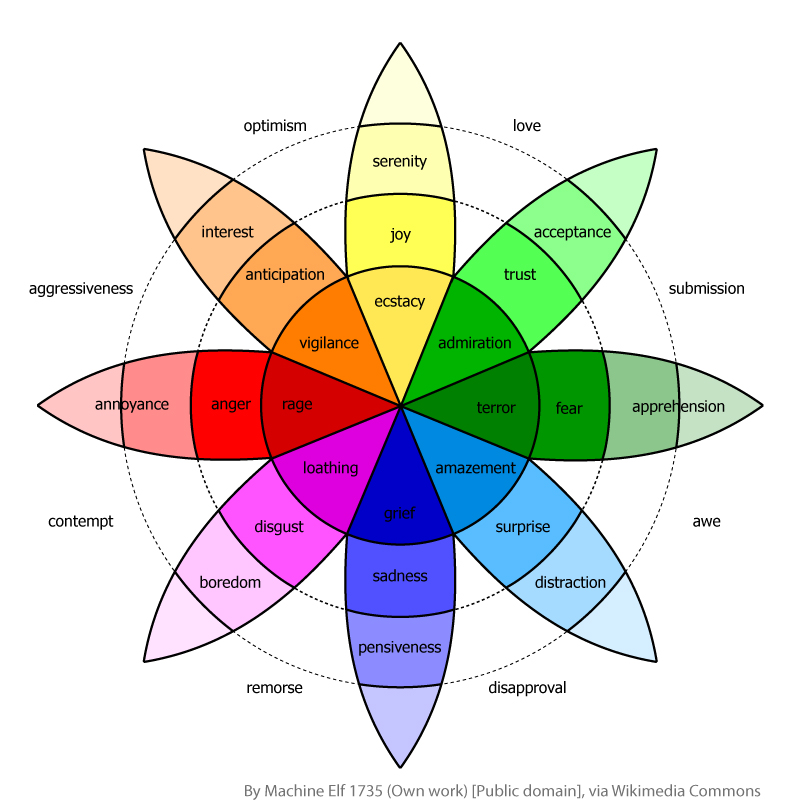Recently, a team lead by Rachael Jack of Glasgow University indicated that only four emotions are basic—happiness, sadness, fear, and anger. Their observations relate to the facial expressions that are recognized across cultures: anger, happiness, fear, and sadness:

Another model of emotion developed by Robert Plutchik took an opposite approach, accounting for no fewer than thirty-two distinct emotional states. This model included such emotions as admiration, vigilance, and ecstasy.

As theorists grapple with competing models, many in the social and emotional learning community have boiled down the basic emotions to six that students can readily identify:
- happiness
- sadness
- fear
- anger
- hurt
- love
Students recognize these emotions in various ways:
- subjective feelings they experience due to the emotion
- facial expressions and tone of voice
- bodily reactions such as sweating or trembling
- actions taken by those experiencing the emotion
- motivations behind the actions
In addition to helping students recognize these emotions, teachers should also help them realize that all of these basic emotions are okay. None are good or bad. They just are. Helping students recognize and accept the emotions they are experiencing provides a first step in managing those emotions.